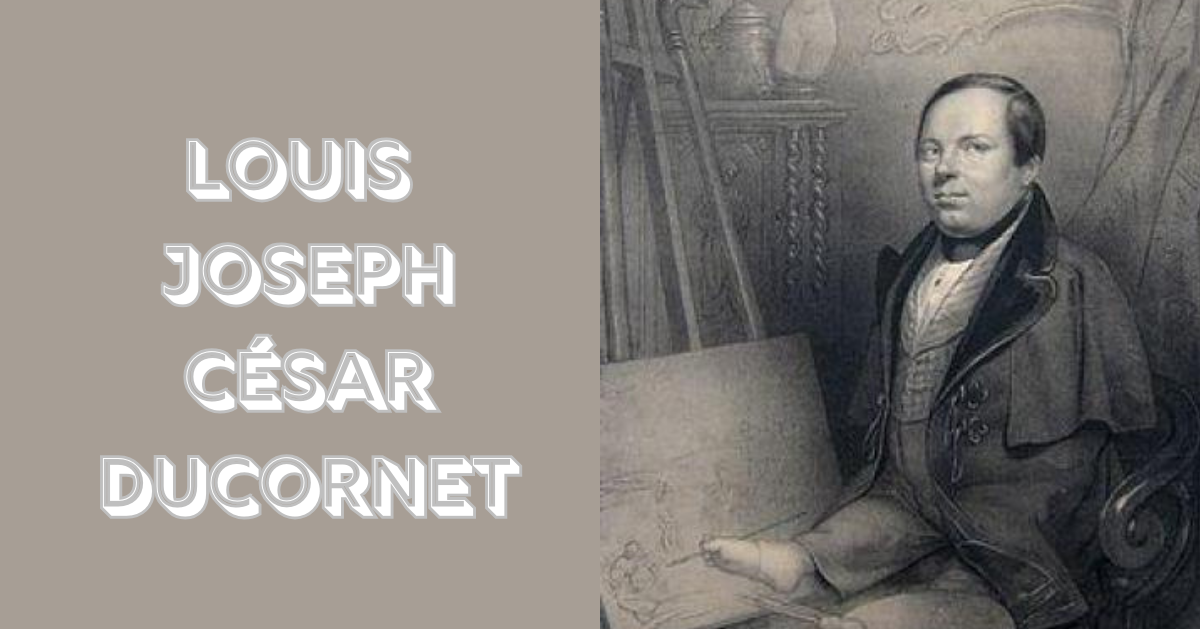Louis Joseph César Ducornet was an extraordinary 19th-century French artist known for his immense talent despite being born without hands. His life and achievements are a testament to the triumph of human will over physical limitations, and his art continues to inspire people today. Ducornet’s story is both fascinating and heartwarming, as he pursued his passion for painting and became highly regarded in the artistic community of his time.
Early Life and Challenges
Born on January 10, 1806, in Lille, France, Louis Joseph César Ducornet entered the world with a significant challenge—he was born without arms. Despite this physical limitation, his natural inclination toward art became apparent from a young age. His parents noticed his artistic tendencies and encouraged his passion, which would eventually lead him to a remarkable career.
In a society that often marginalized people with disabilities, Ducornet’s determination to succeed is nothing short of inspiring. His journey was filled with challenges, but his incredible willpower allowed him to defy expectations and develop a profound skill set as a painter.
A Unique Method of Painting
What makes Ducornet’s work truly unique is the way he created his masterpieces. Born without hands, he learned to paint using his feet. This remarkable feat of adaptability allowed him to produce artworks that rivaled those of able-bodied artists. His brushstrokes, attention to detail, and artistic vision were no less impressive than those of his contemporaries.
Ducornet’s use of his feet as a tool for painting demonstrated not only his perseverance but also his incredible ability to overcome obstacles. His paintings displayed a level of finesse and artistry that made many forget the circumstances under which they were created.
Training Under Acclaimed Artists
Louis Ducornet’s raw talent and dedication did not go unnoticed. He received formal training from some of the most respected artists of his time, including François Louis Joseph Watteau and Guillaume Guillon-Lethière. Under their guidance, Ducornet honed his craft and developed his own unique artistic style.
Through rigorous practice and mentorship, Ducornet was able to refine his techniques, and his work began to gain recognition. His teachers were amazed by his ability to create beautiful paintings despite his physical limitations, and they were instrumental in helping him reach new heights in his artistic career.
Gaining Recognition in Art Circles
By the mid-19th century, Ducornet had established himself as a prominent artist in France. He exhibited his work in prestigious art salons, including the renowned Paris Salon. These exhibitions provided him with a platform to showcase his unique talent to a broader audience, and he quickly gained a reputation as a gifted painter.
Ducornet’s work often featured religious themes and classical subjects, which were highly popular during that era. His ability to capture the emotion and depth of these subjects resonated with viewers, and his paintings were highly regarded for their complexity and technical proficiency.
Notable Works and Contributions
Among Ducornet’s most notable works is his painting titled “The Martyrdom of St. Lawrence,” which is widely recognized for its dramatic intensity and masterful use of color. The work captures the suffering and emotion of the saint’s martyrdom, showcasing Ducornet’s ability to convey powerful themes through his art.
Other works by Ducornet include portraits, mythological scenes, and religious depictions. His paintings displayed a range of subjects that highlighted his versatility as an artist. Despite his disability, Ducornet never limited himself to one particular genre, and his diverse portfolio reflects his broad interests and deep understanding of art.
Challenges Faced in His Career
While Ducornet gained recognition and success as an artist, his career was not without its challenges. Living with a physical disability in the 19th century came with its own set of societal prejudices and obstacles. There were times when his work was judged more for the novelty of his disability than for its artistic merit.
However, Ducornet refused to be defined by his physical condition. He continued to push the boundaries of what was possible and worked hard to ensure that his art spoke for itself. His perseverance paid off, as he became a respected figure in the French art scene.
Overcoming Societal Prejudices
In addition to the physical challenges he faced, Ducornet also had to contend with societal prejudices against people with disabilities. At that time, many viewed individuals with physical impairments as inferior or incapable of contributing meaningfully to society.
Ducornet, however, broke down these barriers through his exceptional talent. His success challenged the misconceptions of his era, proving that a person’s worth and abilities were not defined by their physical appearance. His story continues to inspire people with disabilities and serves as a reminder that talent and determination can overcome any obstacle.
Legacy and Impact on the Art World
Ducornet’s legacy is one of inspiration and admiration. He left behind a body of work that continues to be celebrated for its beauty and technical prowess. His story also serves as a powerful example of resilience and the ability to overcome adversity.
While he may not be as widely known today as some of his contemporaries, Ducornet’s contributions to the art world are significant. His paintings continue to be studied and appreciated by art historians and enthusiasts alike.
Conclusion
Louis Joseph César Ducornet’s life is a remarkable tale of perseverance, creativity, and triumph over adversity. Born without hands, he used his feet to create stunning works of art that continue to captivate auncedies. His story is a testament to the power of human will and the ability to transcend physical limitations through passion and dedication.
Ducornet’s legacy as an artist who defied the odds is an enduring reminder that creativity knows no boundaries. His work remains a source of inspiration for artists and individuals facing challenges of their own.
FAQs
What made Louis Joseph César Ducornet unique as an artist?
Ducornet was born without hands and painted using his feet, which made his work extraordinary and unique. His talent and adaptability allowed him to create beautiful art despite his physical limitations.
How did Ducornet train to become an artist?
Ducornet received formal training from respected artists such as François Louis Joseph Watteau and Guillaume Guillon-Lethière, who helped him refine his techniques and develop his own style.
What types of art did Ducornet create?
Ducornet’s work encompassed a range of subjects, including religious themes, mythological scenes, and portraits. He was known for his versatility and ability to work across different genres.
What are some of Ducornet’s most famous works?
One of his most notable paintings is “The Martyrdom of St. Lawrence.” He also created numerous other works, including portraits and religious depictions, that showcased his talent.
How did Ducornet overcome societal challenges related to his disability?
Ducornet overcame societal prejudices through his exceptional talent and determination. His success as an artist helped challenge misconceptions about people with disabilities.












